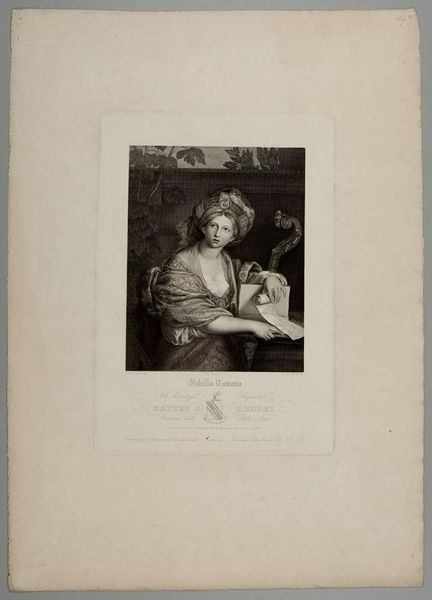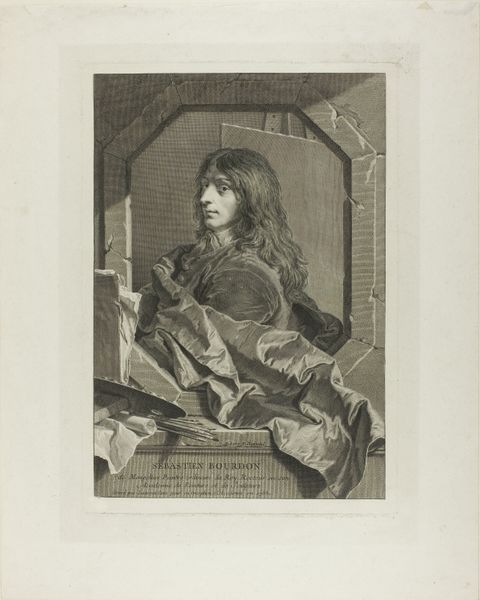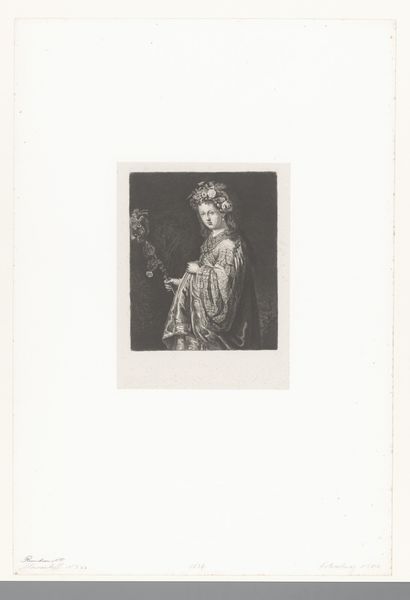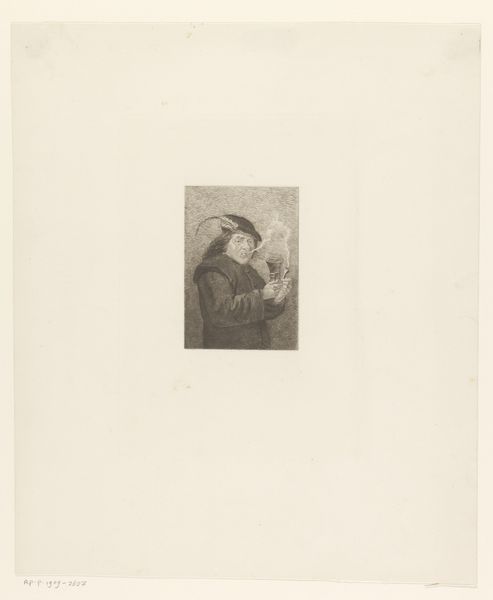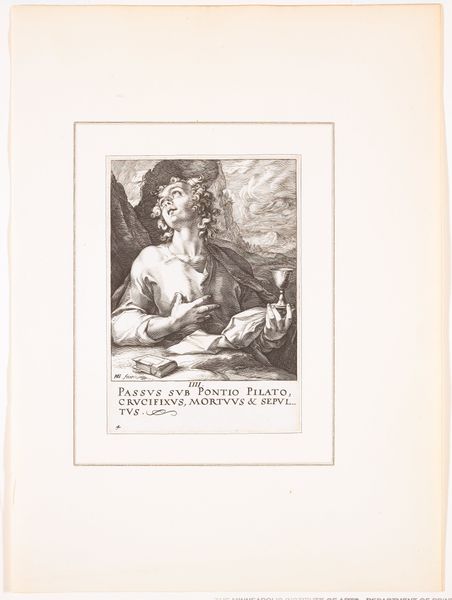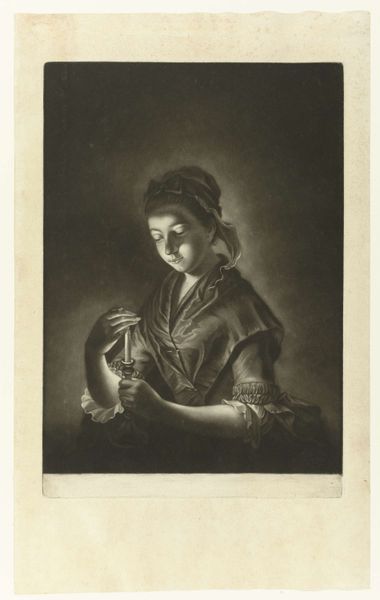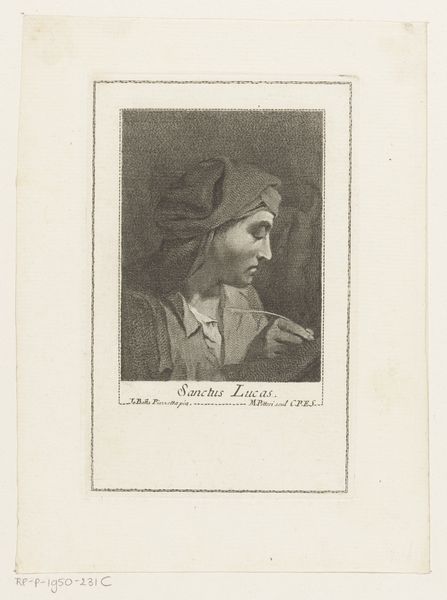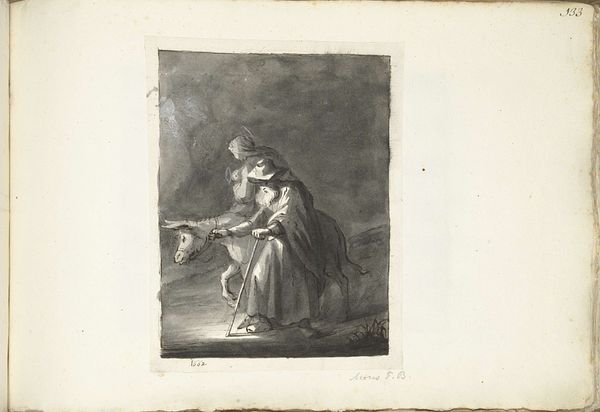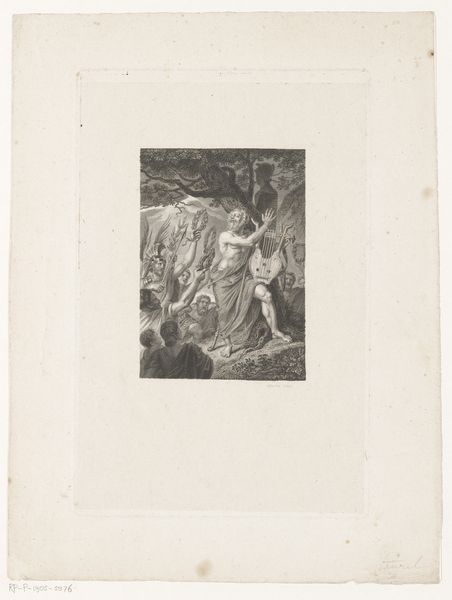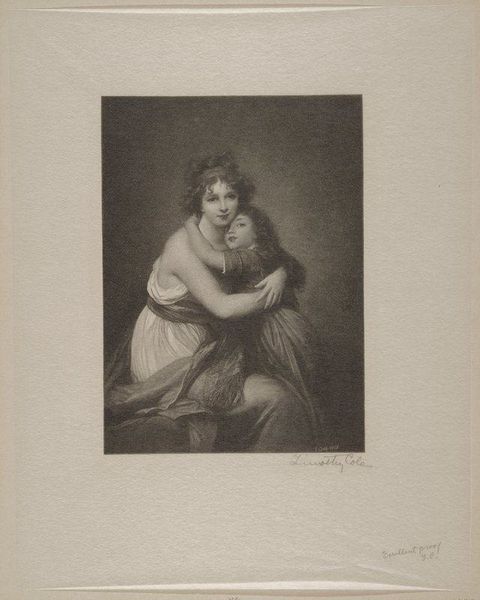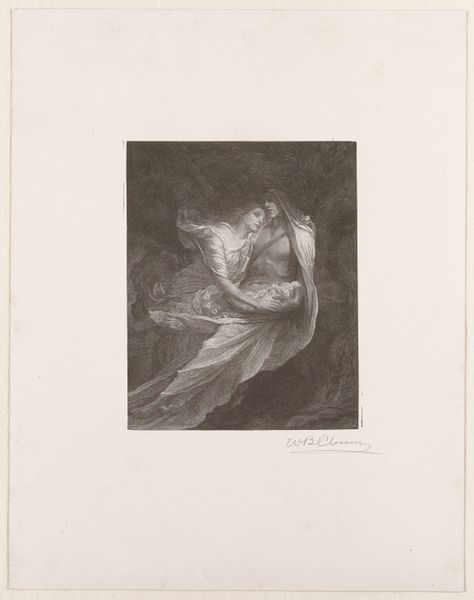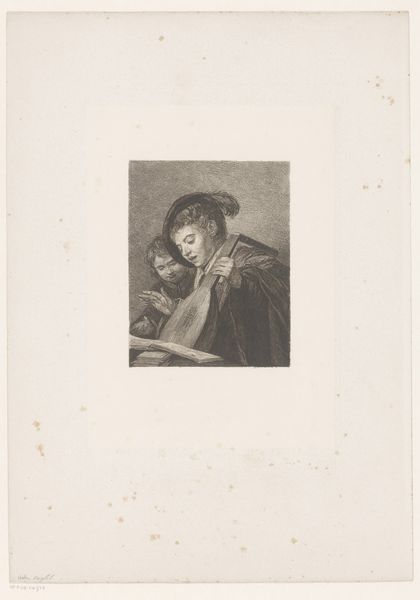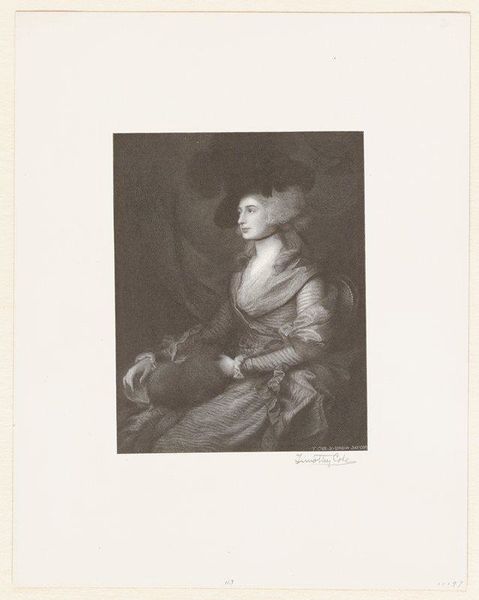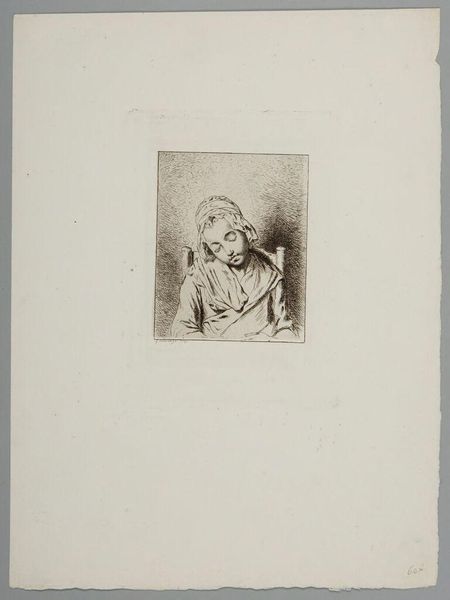
print, engraving
# print
#
figuration
#
history-painting
#
academic-art
#
engraving
#
realism
Dimensions: height 360 mm, width 290 mm
Copyright: Rijks Museum: Open Domain
Editor: This is a print called "Johannes de Doper," made sometime between 1855 and 1870 by Herman Löwenstam. The engraving is quite detailed, showing John the Baptist with a staff and bowl. The mood feels somber and introspective to me. What stands out to you as you look at this image? Curator: The engraving medium immediately speaks to its context. This was a way to disseminate imagery widely, to share iconic figures. Look at the composition, its references, its intentional symbolism! The staff marked with a scroll indicates John's role as a messenger, a prophet. What does the bowl suggest to you? Editor: Maybe it's baptismal water, symbolizing purification or a new beginning? I'm just guessing! Curator: Precisely! The water signifies cleansing and spiritual rebirth, central themes in John’s ministry. Löwenstam subtly references artistic traditions of depicting John, ensuring viewers would immediately recognize and connect with this representation, linking past interpretations and belief. He becomes an eternal, memorable, and persuasive idea of faith. Editor: It's interesting how a simple image can carry so much cultural weight! Curator: Visual symbols accumulate layers of meaning over time, shaped by cultural memory. Understanding the symbolism allows us to interpret not just the artwork but the cultural values it reflects and perpetuates. And isn't this idea powerfully represented through the careful details? Editor: I see that now, the intentional use of recognizable symbols really reinforces its message. Thanks, I definitely learned a lot! Curator: And I am reminded of the lasting power of visual symbols in conveying complex ideas.
Comments
No comments
Be the first to comment and join the conversation on the ultimate creative platform.
